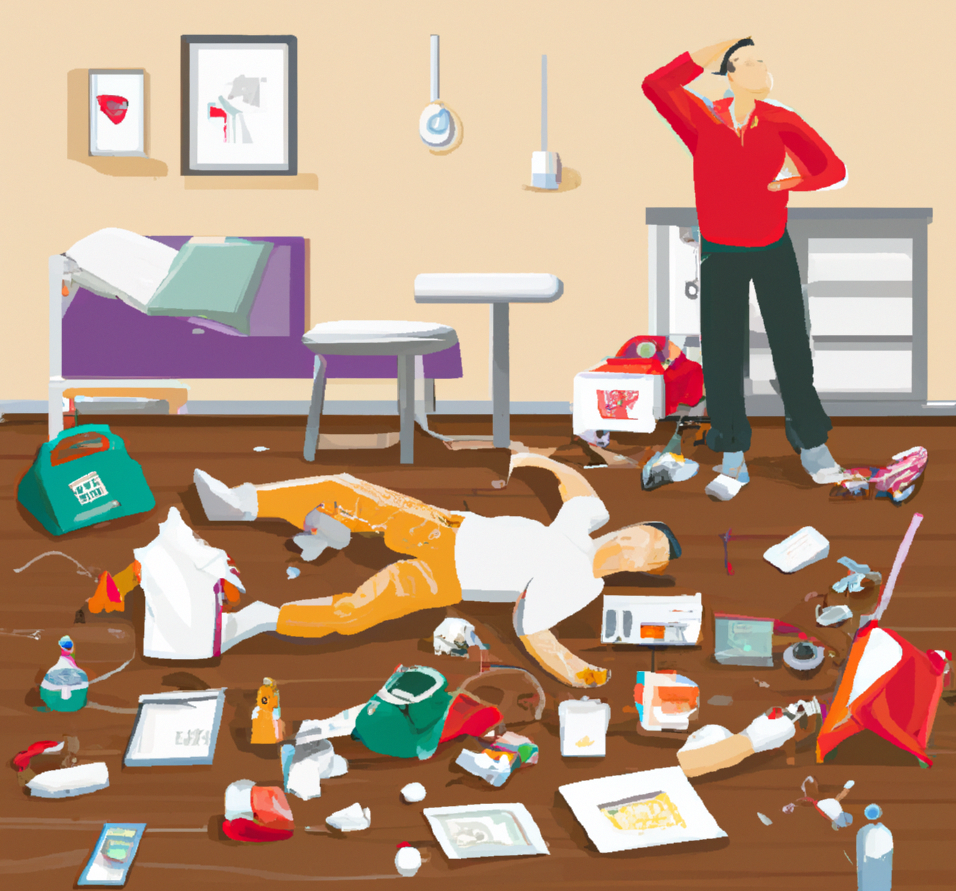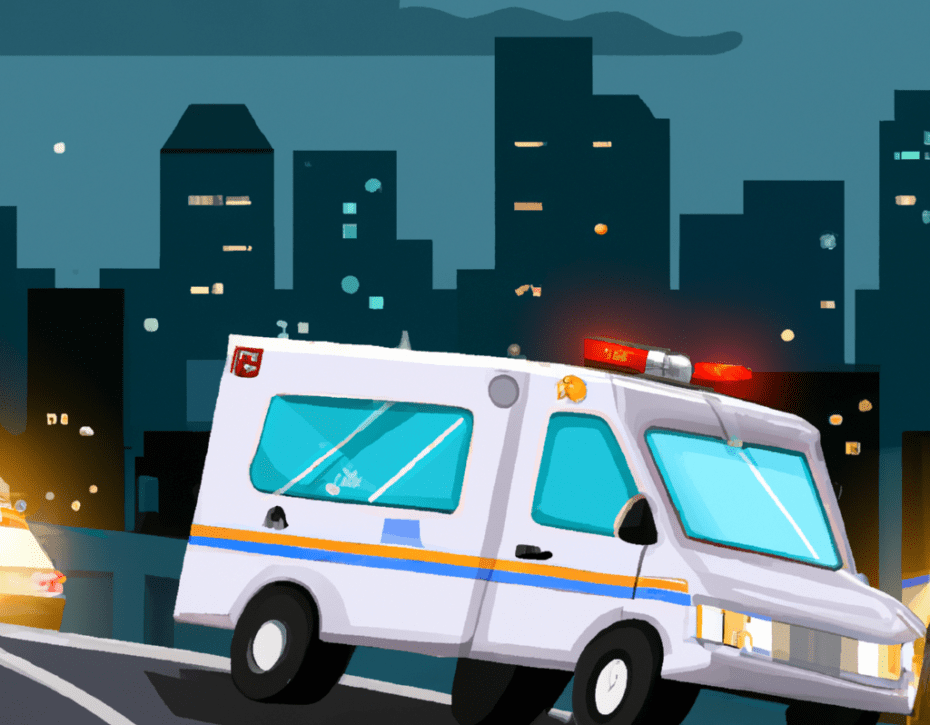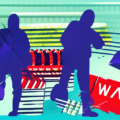An opioid overdose occurs when a person takes a large enough dose of opioids, a class of drugs that includes prescription painkillers, such as oxycodone and hydrocodone, as well as illegal drugs like heroin and fentanyl.
Opioids work by binding to specific receptors in the brain and spinal cord, which can reduce the perception of pain and create a feeling of euphoria. However, when too much of an opioid is taken, it can cause the respiratory system to slow down or even stop, leading to a lack of oxygen to the brain and other vital organs. This can cause brain damage or death.
Opioid overdose is particularly dangerous because it can happen quickly and unexpectedly, even in people who have been taking opioids for a long time. Additionally, the potency of illegal opioids like fentanyl is much higher than that of other opioids, which means that a small amount can be fatal.
Recognizing an overdose

It is crucial to note that opioid overdose can occur to anyone, regardless of whether they have a history of opioid use or not. Hence, it is imperative to be cognizant of the signs and symptoms and to take them seriously if they manifest.
Recognizing an opioid overdose can be a formidable task as the indications and manifestations can fluctuate contingent on the opioid and quantity consumed. Nonetheless, some prevalent signs of an opioid overdose include:
- The fact of opioid use known or obvious
- A person is awake but unable to talk.
- Their body is very limp.
- The face is very pale or clammy.
- Fingernails and lips turn blue or purplish black.
- For lighter-skinned people, the skin tone turns bluish-purple, for darker-skinned people, it turns grayish or ashen.
- Breathing is very slow and shallow, erratic, or has stopped.
- Pulse is slow, erratic, or not there at all.
- Choking sounds, or a snore-like gurgling noise.
- Vomiting.
- Loss of consciousness.
- Unresponsive to outside stimuli.
First aid for opioid overdose

I. Stimulation
If the person is unconscious, first attempt to rouse them by calling their name. Additionally, you can employ statements that may elicit a response, such as “I am going to call 911.” Should they remain unresponsive, attempt to stimulate them through mild pain by gently rubbing your knuckles into the sternum, or by squeezing and gently pulling the person’s earlobe. You can also pinch the hand or gently rub the upper lip of a person with your knuckles.
If this causes the person to wake up, try to get them to focus. Continuously monitor them, particularly their breathing and pulse, and attempt to keep them awake and alert. If their breathing is shallow, they mention feeling short of breath, or they are experiencing chest tightness, call 911 immediately.
If the person does not respond to stimulation and remains unconscious or the condition appears to worsen, do not try a different or alternative form of stimulation. Treat this as a medical emergency and call 911 immediately.
II. Recovery Position
If you need to leave the overdosing person at any time – even for a minute to call 911 – ensure that they are placed in the Recovery Position. Read more about this method in the article.
III. Call for Help
It is advisable to call 911 in the event of an overdose as it is crucial to have trained medical professionals evaluate the condition of the overdosing person.
Inform the paramedics of your exact location and the overdosing person’s location, and give as much information as possible to facilitate quick identification.
While communicating with the dispatcher on the phone, avoid using words such as drugs or overdose; stick to observable symptoms such as “The person is not breathing, turning blue, unconscious, non-responsive, etc.” This makes the call a priority, as it will be identified as a life-threatening emergency. The dispatcher does not need to know the details of the situation, only that there is an emergency that requires immediate assistance.
When calling 911, minimize loud noise in the background – if it sounds chaotic, they will dispatch police to secure the scene and protect the paramedics.
When the paramedics arrive, provide them with as much information as possible; inform them of what drugs the person may have been using, when they used them, and whether naloxone was administered, etc. If the paramedics suspect opioid use, they will administer an injection or intranasal dose of naloxone. Remember, the paramedics’ primary goal is to address the health of the individual and respond to the medical emergency.
IV. Perform Rescue Breathing
If someone has extremely shallow and intermittent breathing (around one breath every 5-10 seconds) or has stopped breathing and is unresponsive, rescue breathing should be performed as soon as possible; it is the quickest way of getting oxygen to someone who has stopped breathing.
If you are performing rescue breathing, you are getting much-needed air into someone’s body who will die without it; the difference between survival and death in an opioid overdose depends on how quickly enough oxygen gets into the person’s body.
This video explains in detail and clearly the process of rescue breathing:
It’s not difficult. Here are the main steps and the sequence of actions in the text:
- Place the person on their back.
- Tilt their chin up to open the airway.
- Check to see if there is anything in their mouth blocking their airway—such as gum, or toothpick—and if so, remove it.
- Pinch their nose with one hand, place your mouth over the overdosing person’s mouth, and give 2 even, regular-sized breaths. Blow enough air into their lungs to make their chest rise. If you don’t see their chest rise out of the corner of your eye, tilt the head back more, make sure you’re plugging their nose, and also make sure you have a good seal over the victim’s mouth.
- After 5 seconds, breathe again. Give one breath every 5 seconds until the person starts breathing on his or her own or until emergency responders arrive.
- Repeat.
V. Administer Naloxone
If the person is not breathing, perform rescue breathing for a few quick breaths first. Then, administer nasal or injectable Naloxone according to the instructions, which is better to read and know in advance.
VI. Aftercare
Naloxone only lasts between 30-90 minutes, while the effects of the opioids may last much longer. It is possible that after the naloxone wears off, the overdose could recur.
It is crucial that someone stays with the person and wait out the risk period just in case another dose of naloxone is necessary. Furthermore, because naloxone blocks opioids from acting, it is possible that it can cause withdrawal symptoms in someone that has a habit or physical dependence, daily opioid pain medication use, or other opioid tolerance. Someone who is taking opioids for daily pain management will go into withdrawal too and experience the pain that they are treating with the opioids.
Therefore, after giving someone naloxone, he or she may feel extremely sick and want to use it again right away. It is crucial that one does not use it again until the naloxone wears off so that a re-overdose does not occur.
Not only that, if the person uses more heroin or opioids when there is still naloxone in the system, he or she may not feel it at all – naloxone will knock it out of the opioid receptors and the person will have wasted their drugs. Try to support the person during this time period and encourage him or her not to use it for a couple of hours.
If the person cannot walk and talk well after waking up, then it is crucial that they are taken to the hospital.
If possible, stay with the person for several hours keeping them awake. It is safe to administer naloxone again if it is necessary. Note if a victim is not responsive to stimulation, not breathing, and has no pulse after receiving naloxone and rescue breathing, then the victim needs cardiopulmonary resuscitation (CPR) via a trained bystander and the emergency medical system. Call 911!
The rule
It is rare for someone to die immediately from an overdose. When people survive, it’s because someone was there to respond. The most important thing is to act right away.
You can find more details on the harmreduction.org. My material is largely inspired and borrows from their work. For example, this document is just below contains and competently presents detailed information about the help and prevention of opioid overdose.
That’s all for today.
If you think that something needs to be added or corrected in this article, please do not hesitate to reach out to me. I am always open to dialogue.
I hope this article was helpful. If you would like to support the development of this blog, please consider the following actions:
- Subscribe to my social media accounts.
- Share a link to this article with your friends.
- Mention this blog on relevant resources or in chat groups.
Thank you for your time and attention 👨⚕️




